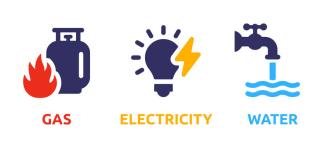
DID RISING DIVIDEND STOCKS JUST HAVE A BAD YEAR?
By John H. Robinson, Financial Planner (January 15, 2024)
It’s a fair question that some investors in dividend stocks are asking, and it deserves a circumspect response along with a bit of perspective. The source of this query is the dramatic disparity in returns between the major U.S. growth stock indices, which were powered higher throughout 2023 by a handful of (mostly) non-dividend-paying tech stocks, and the large-cap U.S. value indices, which include many of our consistent rising dividend companies, andwould have barely gotten off the schneid were it not for an end of year stock market rally that lifted virtually all boats higher. The disparity is evidenced below in this table from Morningstar –
Taking Stock
From this table, it seems clear that growth/tech stocks were in favor while value stocks in general and dividend stocks in particular were decidedly not. However, a deeper dive into the universe of rising dividend stocks that I follow and, most importantly, the dividend stocks in our client portfolios, finds that these numbers belie a sharp dichotomy within dividend-paying companies. There were of course a few individual companies that stunk up the stock pages, but, as usual, these outliers were offset by a few pleasant surprises as well. However, the most poignant observation I discovered was that several traditionally staid, reliable dividend-paying sectors posted uncharacteristically bad years. These included many of the big pharmaceutical companies, defense stocks, electric and gas utilities, chip makers, and, of course, regional banks. While there were a few companies that defied the trends within these industry ranks, an unusually large number saw double-digit share-price declines in 2023. When viewed through this lens, my response is, “Yes, this was an unusually poor performing year for several major industries that are historically known for their dividend-paying proclivity.”
Is the Disparity in Performance Too Great to Ignore?
One long-time client expressed this very sentiment in early January when he noted in our year-end performance report that his portfolio was only up 6% when the overall stock market was up close to 25%. "That’s a lot to miss out on," he noted. This is the part of the essay where it is important to view performance in its proper perspective. My response to him was that part of the reason rising dividend stocks trailed growth stocks by so much in 2023 was that growth stocks were rebounding from double-digit losses they suffered in 2023, while dividend stocks were less impacted. In my opinion, nothing illustrates this point better than the table below
|
|
2023 Total Return |
2022 Total Return |
|
Vanguard Total Market Index ETF (VTI) |
24.05% |
-20.81% |
|
Vanguard Dividend Achievers Index ETF (VIG) |
12.18% |
-11.57% |
|
S&P Dividend ETF (Dividend Aristocrats Index) (SDY) |
2.63% |
-.52% |
(Source: ETF Fact Sheets)
In my client’s case, his rising dividend stock portfolio was up a little more than 3% in 2022 and up just under 6% in 2023. This two-year return is better than all three of the indexes in this table. In terms of basic investment math, it is important to understand the difference between arithmetic and geometric returns. While the average of a -20% year and a +25% year is a positive number, a 20% market price decline in a given year, requires a 25% gain just to get back to even.
So, Which is Better Moving Forward – Investing in Index Funds/ETFs or Investing In Rising Dividend Stocks?
My response is always the same, if your objective is solely market returns, there is a mountain of academic support for index fund investing. I would never suggest that consumers should invest in rising dividend stocks as a way to outperform the stock market. However, the reason that we still use rising dividend stocks for many clients is that they offer the potential to do something that neither index funds nor bonds can do – provide a steady stream of (tax-)qualified dividend income that grows over time at a pace that is (hopefully) faster than inflation while offering the potential for modest price appreciation along the way as well.
Although the magnitude of the declines in the prices of some companies in industries that are often regarded as “conservative” (e.g., banks and utilities) serves as a reminder that shares of rising dividends companies still represent an investment in stocks and an acceptance of all of the volatility that goes with owning them, at the end of the day, we expect that a well-diversified basket of rising dividends stocks will generally be less volatile than the overall stock market. That is indeed what we have seen over the past two years.
In terms of which is better, as your financial planner, I am agnostic to this decision. What matters is the financial objective you have for your savings. To borrow a phrase from the popular vernacular, “You do you.”
Related Reading:
A Case for Direct Indexing Using Rising Dividend Stocks (Advisor Perspectives)
A Roadmap to Investing in Rising Dividend Stocks (FPH Blog)
Why Safe Haven Utility Stocks Are Having Their Worst Year Since 2008 (Forbes)
High-Yielding Dividend Stocks Have Been the Worst Bet This Year (MarketWatch)
John H. Robinson is the owner/founder of Financial Planning Hawaii and Fee-Only Planning Hawaii. He is also a co-founder of fintech software maker Nest Egg Guru.

